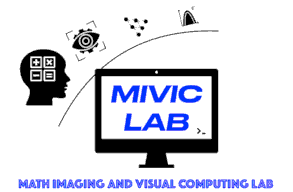| Title | A noninvasive [99mTc]DTPA SPECT/CT imaging methodology as a measure of lung permeability in a guinea pig model of COPD. |
| Publication Type | Journal Article |
| Year of Publication | 2011 |
| Authors | Wu, Y, Kotzer, CJ, Makrogiannis, S, Logan, GA, Haley, H, Barnette, MS, Sarkar, SK |
| Journal | Mol Imaging Biol |
| Volume | 13 |
| Pagination | 923–929 |
| Date Published | Oct |
| Keywords | Animal, Animals, Chronic Obstructive, diagnosis/metabolism/radionuclide imaging, diagnostic use, Disease Models, Emission-Computed, Guinea Pigs, Lung, metabolism, methods, Pulmonary Disease, Single-Photon, Technetium Tc 99m Pentetate, Tomography, X-Ray Computed |
| Abstract | The purposes of this study are (1) to develop an efficient aerosol inhalation system for the delivery of DTPA aerosol into guinea pig airways with high uniformity for measuring lung clearance using SPECT/CT imaging, as a measure of lung permeability, and (2) to use DTPA studies in guinea pig model of chronic obstructive pulmonary disease (COPD) to determine its usefulness in studying pathogenesis of COPD.We developed an aerosol delivery system and single-photon emission computed tomography (SPECT) imaging method to measure the pulmonary clearance rate in anesthetized guinea pigs. In this system, an 830-cc rebreather exposure chamber was filled with oxygen immediately before a 5 min DTPA (4-5 mCi/mL) aerosol exposure. The rebreather included a top mounted AeroNeb micro pump nebulizer, a nose-only exposure tube, and rear evacuation port. An 830-cc rebreather exposure chamber was filled with oxygen immediately before 5 min DTPA (4???5 mCi/mL) aerosol exposure. One control and one cigarette smoking group were studied.Images showed high and uniform lung deposition and the mean clearance rate was increased by 37% in smoking group.The combined SPECT/CT imaging method developed here can be used for serial evaluation of lung function and its response to drug therapy in guinea pig model of COPD. |
| URL | http://dx.doi.org/10.1007/s11307-010-0423-9 |
| DOI | 10.1007/s11307-010-0423-9 |
| PubMed ID | 20838905 |
A noninvasive [99mTc]DTPA SPECT/CT imaging methodology as a measure of lung permeability in a guinea pig model of COPD.
Submitted by admin on Fri, 01/24/2014 - 20:03
